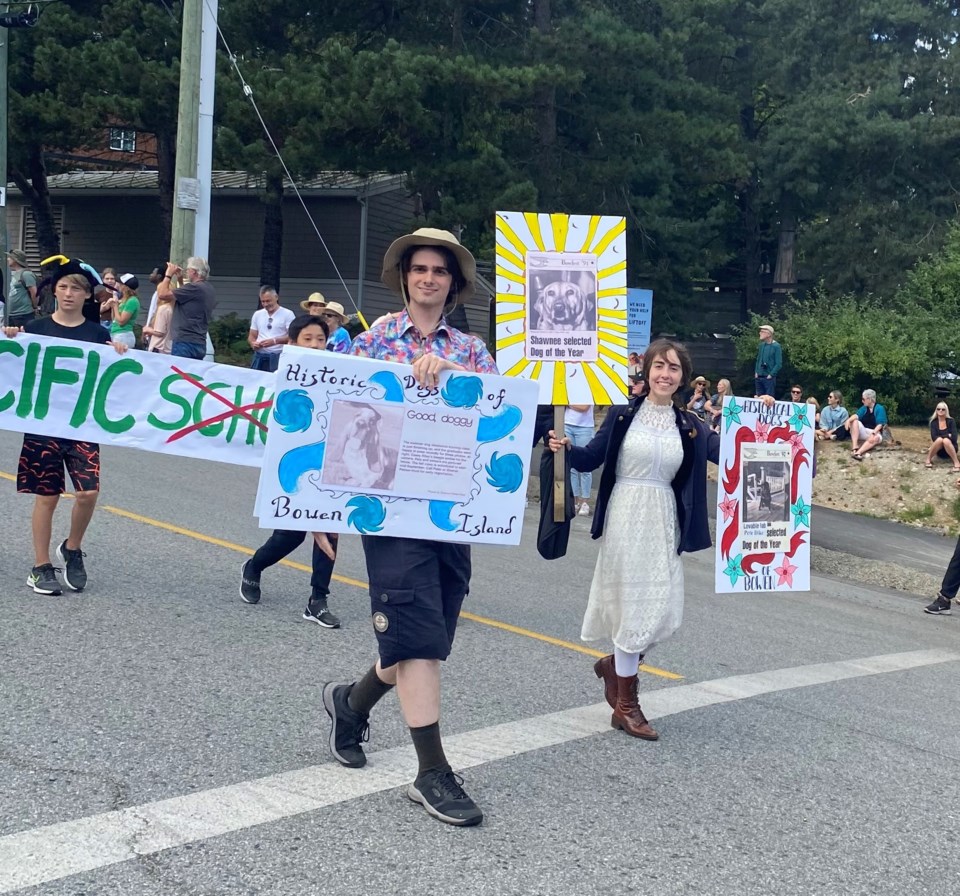In the first few weeks of my summer job as a Museum Assistant at the Bowen Island Museum and Archives, I was sitting at the kitchen table of my aunt’s friend’s house, watching the ocean crash around in those unseasonable summer winds we had in June, when I got asked a very good question – “so what do you… do, in a museum?”
I hope you won’t fault the guy who asked it, dear reader. He was just on his way to make pop-tarts and looking to make some conversation, and he’s not alone in his curiosity. Since starting this job, I’ve had lots of people ask similar questions, because not many people get to hear about the behind-the-scenes work that gets done in museums.
So I figure, I should give you all a little description about what goes on in a museum on a day-to-day basis.
The exhibits that you see on display in a museum are only a part of the story, because while you’re browsing the Union Steamship dishes and Bowfest trophies, the curator and assistants are already one step ahead of you, brainstorming the next exhibit.
Once we have a subject (this summer it was fishing and mail-delivery on Bowen), the researching starts. We head into the archives and look up photos and information about that subject.
The archivist is usually a great help in this process. In the case of the fishing exhibit, when I had trouble finding information about fishing as a broad subject, she suggested I focus more specifically on the fishing derbies, and with the subject narrowed like that, I found a plethora of great pictures, and the title for the exhibit in an old newsletter – “Piscatorial Paradise.”
I thought that since somebody had the gall to publish such a fanciful phrase in a newspaper, it was only right that I should have the gall to name the exhibit after it, so the name stuck.
After researching, we then need to put the objects together that will go into the exhibit. In some cases, they are recently-donated, so they have to be catalogued as well. This helps us find them later, and know where they came from, what they are, and where they are stored.
Thus, I spent two and a half days cataloguing every tiny piece of tackle in an incredible old tackle-box donated by Glenn Wolfe, and then it was ready to go out on display, and meet the public.
Setting up the exhibit is the most artistic part. All the photocopies of photos have to be mounted on foam core, the artifacts have to be positioned on plinths, and information has to be stuck to the walls to describe it all. It’s amazing to see a collection come to life as a display, and then get to share that with everyone who visits the museum.
“Is that it?” you might ask, “Just exhibit design?” To which I would have to reply, not quite. We also set up programs for visitors, such as our new scavenger hunt, and the kids Craft and Culture days we hosted this summer. We hold Tea for Two for seniors on the porch, which involves making tea (who knew culinary experience would be needed in a museum!), and help anyone who visits with a specific question get the answer they were looking for.
The life of a museum assistant is an exciting one, and I’m so grateful that I got to spend the summer living that life on Bowen.




